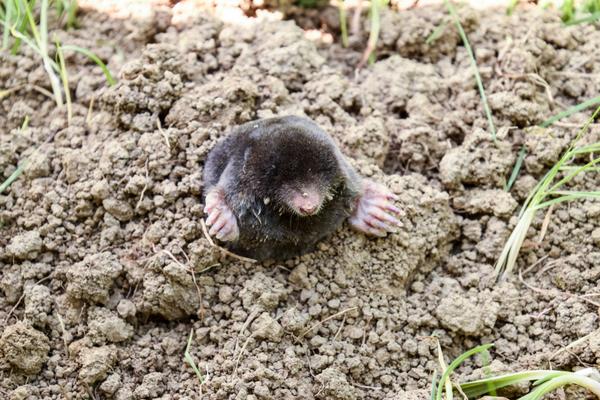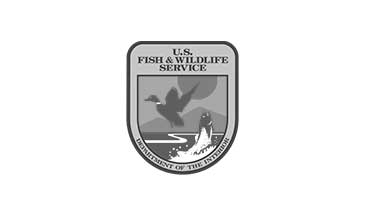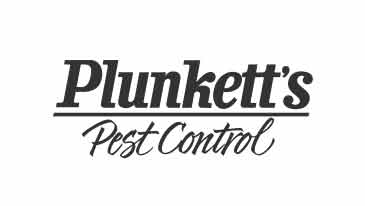Unlike people, who like to settle down and cozy up when the cool weather of fall arrives, many animals ramp up activity in preparation for the coming winter months. While you’re perfecting your chili recipe, your local groundhog is feasting and planning his next elaborate tunnel system.
All of that activity means animals like skunks, bats, groundhogs, and moles can cause damage to your property as they search for food and warm places to make it through the winter.
We’re going to dive into all of the ways some of the most common wildlife make their way through winter and what you can do to discourage them from making your home or business their winter getaway.
Skunks: Foraging Stinkers
Despite our sense of smell’s best wishes, skunks do not hibernate during the winter. Instead, they enter a lighter version of hibernation called torpor. During torpor, the skunk’s metabolism and heart rate fall to conserve energy, just like hibernation. What separates a skunk’s torpor state from typical hibernation is that torpor appears to be involuntary and that skunks in torpor will wake up periodically throughout the winter.
To prepare for torpor, skunks begin hunting more aggressively than usual. Their diet consists of grubs and other insects, which means they have to bulk up before their favorite food disappears in the colder weather.
Once it’s time to settle into torpor, skunks will search out dry and warm places. They could settle under your porch or deck, in woodpiles, in sheds, or in burrows they’ve dug.
In a previous blog, we discussed how to discourage skunks from becoming an unwanted neighbor, here’s a recap:
- Screen off low shelters - Use chicken-wire or wire mesh fencing to restrict skunk access to areas underneath porches, decks, stairs, sheds, and mobile home entrances.
- Declutter - Skunks are attracted to cluttered properties where they can easily hide, so keeping your lawn clear of brush, branches, and debris will make them feel exposed and discourage their approach. Regularly cleaning up your yard helps deter them by reducing hiding spots.
- Secure waste - Skunks will scavenge through unsecured garbage for food. To prevent this, use airtight plastic bags, rinse containers before disposal, and ensure your trash cans or dumpsters are tightly sealed when not in use.
- Remove food sources - Clean up bird seeds, fallen fruits, leaves, twigs, pet food, seeds, nuts, berries, and anything else a skunk could get their snout on.
Of course, if skunks have become an issue for your home or business, it’s always best to rely on experts to humanely handle them in an environmentally conscious way.
Bats: Roosting Rascals

When fall rolls around, bats begin looking for roosts to hibernate in. It’s not a quick stop, either. Bats hibernate from mid-October until March or April and they’re no strangers to attics, chimneys, or rafters — potentially becoming your unwanted roommates for a long time.
Bats can enter your home or business through attic vents, a crack in the chimney, or any other small gap they can squeeze into. Once inside, bats search for dark, tight, secluded places safe from predators.
The nocturnal bat’s preparation for its long winter includes a nightly hunt for insects, where its increased activity coincides with autumn’s lengthening nights.
Groundhogs: Bulking Season
Groundhogs are among the few ground mammals that enter a true state of hibernation, meaning they meet the following three criteria:
- Reduced metabolism
- Slower heart rate
- Lowered body temperature
Throughout fall, groundhogs prepare for their long, wintery slumber by filling up on various plants, fruits, and vegetables. In between meals, they continue working on their expansive underground tunnel system, building multi-chambered tunnel systems with different entrances, exits, and even designated “bathrooms”.
Due to their tunneling and burrowing, groundhogs can cause damage to your home or business’s greenery and foundation. To humanely deter groundhogs from entering your garden or property, take these 3 steps.
- Create a barrier - Tall fences that extend underground at least 1 foot are ideal for preventing groundhogs from climbing or burrowing into your property.
- Modify their habitat - Trim tall grasses and clear piles of debris that may serve as potential cover. Limit their access to food by covering fruit and vegetable gardens and by properly securing compost bins. Avoid leaving out pet food or water bowls that might attract them.
- Install a motion-activated sprinkler - Motion-activated sprinklers can serve as an effective and humane deterrent. These devices spray water when they detect movement, startling the groundhog and encouraging it to relocate. Over time, groundhogs may associate your yard with these unpleasant surprises and avoid the area.
Preventative measures can only go so far, though. If groundhog tunnels are uprooting your garden, damaging your shed, or affecting your foundation—rely on environmentally conscious experts, like our team at Varment Guard, to handle the issue.
Moles: Underground Grub Connoisseur

Like groundhogs, moles spend most of their time underground digging elaborate living spaces, complete with bedrooms, bathrooms, and birthing areas.
Unlike groundhogs, moles don’t hibernate. Instead, they continue their digging in search of worms, their primary source of food. To gain weight for the winter, moles require an extraordinary amount of worms, eating nearly their body weight every day.
To prepare for winter months, moles dig even deeper to stay warm—which means it may appear that moles have left your property, when in fact they may be digging even closer to your home or business. Oftentimes, moles will be attracted to a building’s warmth, so keep an eye out for dying plants or circular mounds of dirt surrounding a vertical shaft. Mole tunnels also create a heaved surface that makes lawn mowing more difficult than usual and brown spots in yards.
To discourage moles from entering your property in the fall or any other season, follow these tips:
- Keep your yard clean - Moles have likely entered your yard for a reliable food source. Keep your landscaping as neat, trim, and clean as possible to limit the number of insects it houses. Varment Guard can also provide a grub treatment that will eliminate a mole’s common food source.
- Don’t overwater your lawn - Moles and many insects prefer damp environments, so it’s important not to overwater your lawn.
- Apply repellents - Moles don’t like the smell of castor oil. Apply the oil to your yard monthly to repel these pesky pests.
Let Varment Guard Be Your Pest Control Experts
As the shorter days and cool months of autumn arrive, just remember with it comes the increased activity of your local critters. To ensure your biggest scares stay contained to your favorite Halloween movie, do your best to take preventative measures and contact the experts at Varment Guard for any winter wildlife control needs. At Varment Guard, we’ve delivered environmentally conscious winter wildlife control and pest management solutions since 1983. Schedule a service today.






